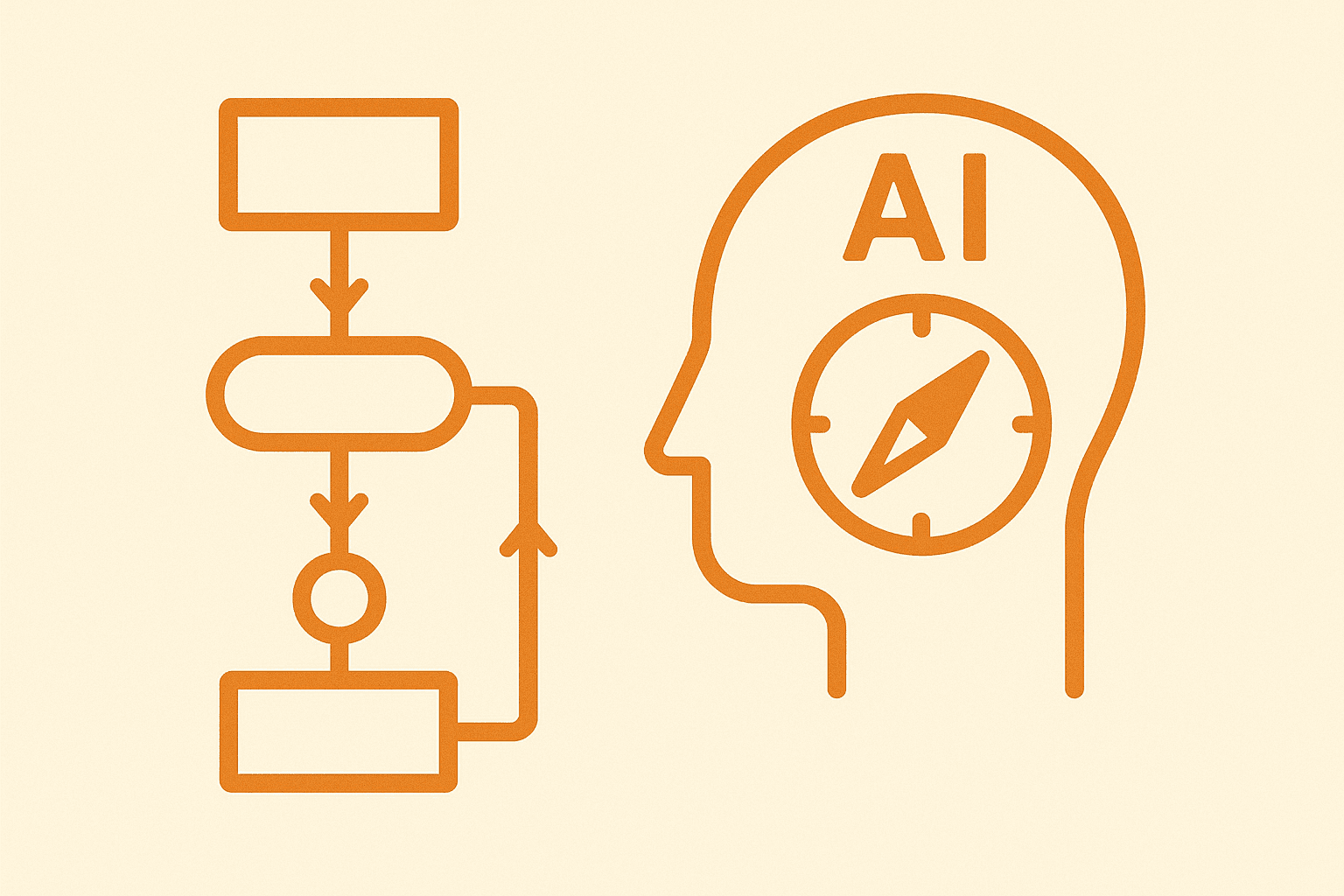Agents Are Not Workflows (And Why It Matters)
Most teams are building workflows when they need agents. Understanding the difference isn't academic—it determines whether you're building infrastructure for the past or the future.

Agents Are Not Workflows (And Why It Matters)
The AI infrastructure space has a terminology problem. Everyone talks about "AI agents," but most are building workflows with an LLM stuck somewhere in the middle. This confusion isn't harmless—it shapes how we build infrastructure, what problems we can solve, and ultimately, what the future of AI-powered applications looks like.
The Definition That Actually Matters
The developer community has converged on a simple definition: an agent runs tools in a loop to achieve a goal. That's it. Not a sequence of predefined steps. Not a flowchart with boxes and arrows. A loop.
Workflows, by contrast, are deterministic graphs. You define the steps, the branches, the parallel paths. The LLM might make decisions at specific nodes, but you've already decided what happens next. You've drawn the map.
Agents don't have maps. They have compasses.
Why Everyone Builds Workflows
When OpenAI launched their workflow builder, when n8n added AI capabilities, when every startup pivots to "agentic AI"—they're all building the same thing: visual workflow orchestrators. And there's a reason for this.
Workflows feel safer. You can see the logic. Debug the paths. Explain to stakeholders exactly what will happen. For enterprises moving billions of dollars, this predictability isn't just nice—it's required.
But predictability has a cost: you're solving yesterday's problems with tomorrow's technology.
The Squeeze Nobody Talks About
Here's what we've observed building infrastructure for actual agents: workflow builders are being squeezed from both ends.
At the low-complexity end, simple agents (a prompt, some tools, a loop) are getting reliably good. Why build a 20-node workflow when "fetch the data, analyze it, send a summary" works? As models improve, this ceiling rises daily.
At the high-complexity end, code wins. Always. Once your workflow hits 50+ nodes with conditional logic, parallel branches, and error handling, maintaining it in a visual builder becomes its own problem. You're fighting the interface, not building the solution.
This leaves a narrow band where visual workflow builders make sense. And that band is shrinking.
What Building for Agents Actually Means
When we started Solstis, we made a deliberate choice: build infrastructure for agents, not workflows.
This means different things at every layer:
Orchestration isn't choreography. You don't define the dance steps. You define the music and let the agent improvise. Our platform handles the loop, the tool execution, the state management—the infrastructure problems that every agent faces.
Observability means different things. With workflows, you trace paths. With agents, you trace reasoning. Why did it choose tool A over tool B? What was in context? How did it recover from failure? These questions matter more than "which node executed."
Testing becomes probabilistic. You can't just check if step 3 runs after step 2. You need to verify: does the agent achieve the goal? Is it doing it efficiently? What percentage of the time does it make the right decision? Agent infrastructure needs to make this testable.
The Infrastructure Gap
Most "agent platforms" are workflow builders wearing AI hats. You can spot them easily: they show you the graph. They make you wire up nodes. They call it "AI orchestration" when it's really "LLM-powered automation."
Real agent infrastructure looks different:
You describe what you want to happen. The platform figures out how. You provide tools and constraints. The agent decides when to use them. You deploy once. The agent improves through use.
This requires infrastructure that most platforms don't have: execution environments that handle non-deterministic behavior, observability that tracks decision-making not just execution, deployment systems that version behavior not just code.
Where This Goes
As code generation approaches zero cost, the distinction matters more, not less. If you can generate code instantly, why are you clicking on boxes in a UI? Two paths emerge:
Path A: Natural language to agent. "Build me a customer support agent that handles refunds." The platform generates the agent, wires up the tools, handles the infrastructure. No code, no workflow builder, no boxes and arrows.
Path B: Code for complex systems. When you need real control—custom error handling, specific business logic, integration with existing systems—you write code. But the infrastructure handles agent-specific concerns: tool orchestration, reasoning loops, state management.
Visual workflow builders fit neither path. They're too complex for Path A (you still need to understand nodes and edges). They're too limiting for Path B (you'll hit the ceiling fast).
What We're Building At Solstis
We're betting on a future where agents are infrastructure, not applications. Where "build an agent" is as simple as "deploy a function." Where the complexity isn't in wiring boxes but in defining capabilities and constraints.
This means:
- Text-to-agent interfaces that understand intent, not just configuration
- Serverless infrastructure that scales with agent complexity, not user count
- Tool ecosystems where agents can discover and use capabilities dynamically
- Observability systems built for reasoning, not just execution
The AI community is moving past workflows faster than the tooling suggests. When Cisco reduces platform engineering from a week to an hour, when investment research compresses from days to seconds—these aren't workflows with smarter nodes. They're agents with better infrastructure.
The Real Question
The question isn't whether to build agents or workflows. It's whether your infrastructure is ready for what agents actually need.
Most platforms are optimized for the workflow era: visual builders, node-based thinking, deterministic execution. But the winning applications of 2025 won't be better workflows. They'll be agents that can act autonomously, recover from failures, and improve through use.
The infrastructure for that future looks nothing like a flowchart.
It looks like a platform where natural language maps to capability, where tools connect automatically, where deployment means "make it work" not "wire these nodes." Where the complexity lives in the infrastructure, not in what the user has to manage.
That's what we're building. Not another workflow builder.
